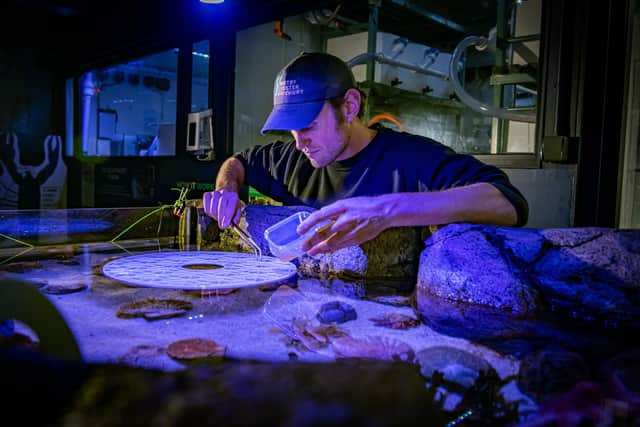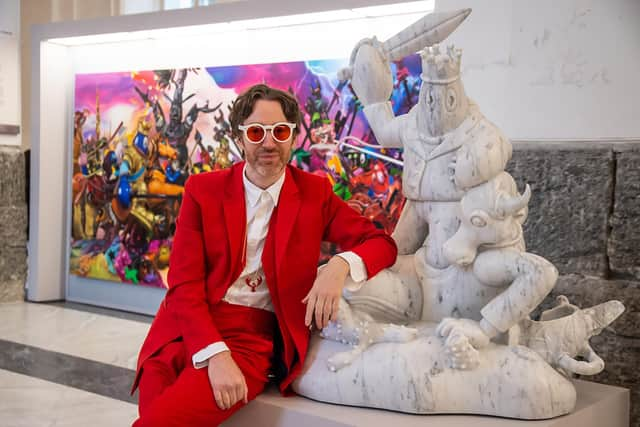Philip Colbert joins forces with Whitby Lobster Hatchery as arts meets science for latest project
“It is genuinely like another universe – it’s the closest thing we have to Mars.”
The alien-like lobster grabbed his imagination and as the budding artist grew older and immersed in art history, he noted what a huge influence it was for the surrealists.
Advertisement
Hide AdAdvertisement
Hide AdThere was Dali with his lobster telephone, lobster feasts and paintings and the poet Gérard de Nerval, who had a pet lobster, which he walked at the end of a blue silk ribbon in the Palais-Royal in Paris.


Lobsters also cropped up in frescoes and mosaics in ancient Pompeii and in Dutch still lifes.
The British Contemporary artist has gone on to create a global following for his cartoon lobster persona and the creatures pop up repeatedly in his imaginative pop hyperverse.
For a couple of years now he’s had a connection with a number of lobster hatcheries, including at Whitby, which aims to reintroduce 100,000 juvenile lobsters into their natural habitat annually.
Advertisement
Hide AdAdvertisement
Hide Ad

His support will allow the charity to rear and release 7,777 juvenile lobsters back into the sea
Colbert’s latest project marries science with art as it aims to discover whether lobsters really can camouflage themselves with their surroundings.
Fishermen suggest that lobsters caught on wrecks can be a rusty colour while those on kelp tend to be darker.
To test the theory out a few months ago juvenile lobsters were placed in five different coloured tank environments created by the artist in blue, green, yellow, pink and red.
Advertisement
Hide AdAdvertisement
Hide AdThey can be watched in real time on a livestream X feed, but most of the time they are resting.
By nature the juveniles are cannabilistic - the ones that are left have eaten some of the cohort they started out with. Whether they change colour has yet to be seen.
Joe Redfern, who runs Whitby Lobster Hatchery, said it was exciting to be involved with the artist: "It’s a way of getting those people who are interested in art connected with our project, and sustainability and research. We are benefitting from his art but the research gives him ideas and inspiration for his work.”
The lobsters went into the tanks at around a month old where they will moult six or seven times: “The idea is that they will gradually change colour through the moults.”
Advertisement
Hide AdAdvertisement
Hide AdColbert said: “Obviously I am very interested in the lobster species because my persona is a lobster and at the same time a creative mask which allows me to have a sense of freedom. I have always felt there’s something fundamentally otherworldly about lobsters, they are like aliens from another planet.
"They have a spirit of surreal energy. If you look back at the relationship of the species between humans and lobsters, they inspire a slightly bonkers response.”
Comment Guidelines
National World encourages reader discussion on our stories. User feedback, insights and back-and-forth exchanges add a rich layer of context to reporting. Please review our Community Guidelines before commenting.
